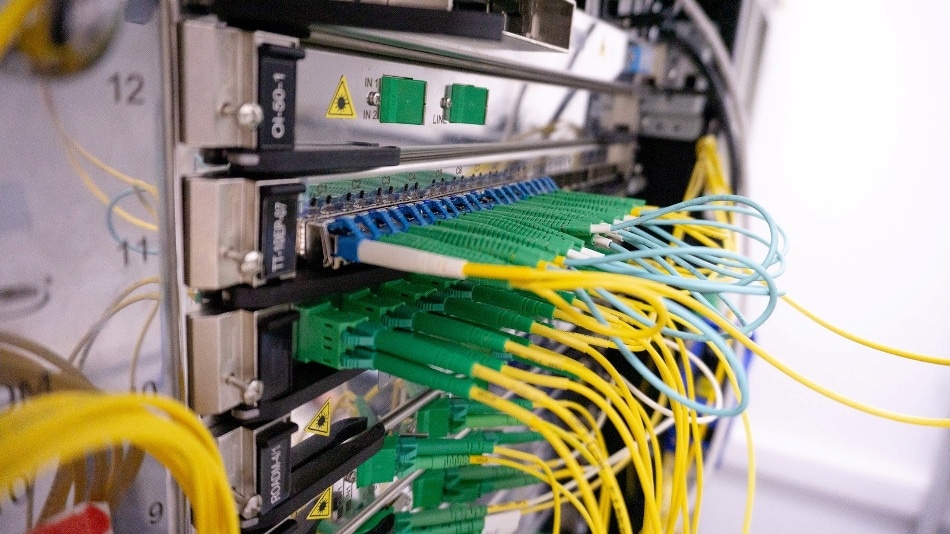Dec 17 2019
Researchers from the Moscow Institute of Physics and Technology have partnered up with engineers from Corning Inc., U.S., and T8, Russia, and developed a system for high-throughput data transfer over great distances without the need for signal repeating along the way. Systems of this kind could be used to provide internet connection and other communication services in remote communities. The study is reported in IEEE Photonics Technology Letters.
 The newly developed Volga platform enables high-speed transmission lines spanning over 520 kilometers, or 323 miles. Credit: T8
The newly developed Volga platform enables high-speed transmission lines spanning over 520 kilometers, or 323 miles. Credit: T8
Countries with large underpopulated areas — such as Russia and Canada — or those comprised by numerous islands, like Indonesia, face difficulties in providing communication services. Without intermediate electricity-powered repeater stations, the signal gets attenuated and does not arrive at the destination. To make long-haul data transmission cheaper, engineers come up with fiber optic systems that amplify the signal along the link without the need for electrical power sources. Top transmission systems available today enable data transfer at the rate of 100 gigabits per second across 500 kilometers (311 miles).
The authors of the letter successfully transmitted a signal over 520 km (323 mi) at 200 Gbps. This had only been done in research labs before, but those results could not be carried over to actual applications. This time commercial cables developed by Corning were used, making the technology applicable under realistic conditions. To avoid the attenuation of the signal, it was amplified initially upon transmission and then two more times remotely, along the way.
“To amplify the signal in the passive fiber, the stimulated Raman scattering effect and remote optically pumped amplifiers were used. The Raman scattering effect allowed us to use the passive optical fiber as an amplification medium, considerably increasing the signal-to-noise ratio at link output,” explained the study’s lead author Dimitriy Starykh, a PhD student at MIPT’s Phystech School of Radio Engineering and Computer Technology.
The transmission line comprised three sections, each consisting of fiber optic cables of two types connected in series. Remote optically pumped erbium amplifiers (ROPA) were installed at the points of junction between the sections. ROPAs consume optical pump and use this energy to amplify signal. The team optimized the junction positions to increase output signal quality, placing the two ROPAs 122 km (76 mi) from the transmitter and 130 km (81 mi) from the receiver, respectively.
The researchers set the signal symbol rate to slightly short of 57 billion pulses per second; the transmitter allowed the transfer of five bits per symbol, enabling a total bit rate of 284 Gbps. While the system potentially supported data transfer at up to 400 Gbps, the engineers ran it at a reduced speed to increase the transmission distance.
“We are already working on a fiber optic system that would achieve higher transfer rates. While the current speed tops at about 400 Gbps, we aim to reach 600 Gbps per channel with the new system,” T8 CEO Vladimir Treshchikov commented. “We achieved signal improvement for rates of 200 Gbps and even 400 Gbps per channel. I think, next year we could set a further transmission distance record.”
The results achieved by the researchers can already be employed to provide communication services in sparsely populated areas, such as the Russian island Sakhalin.